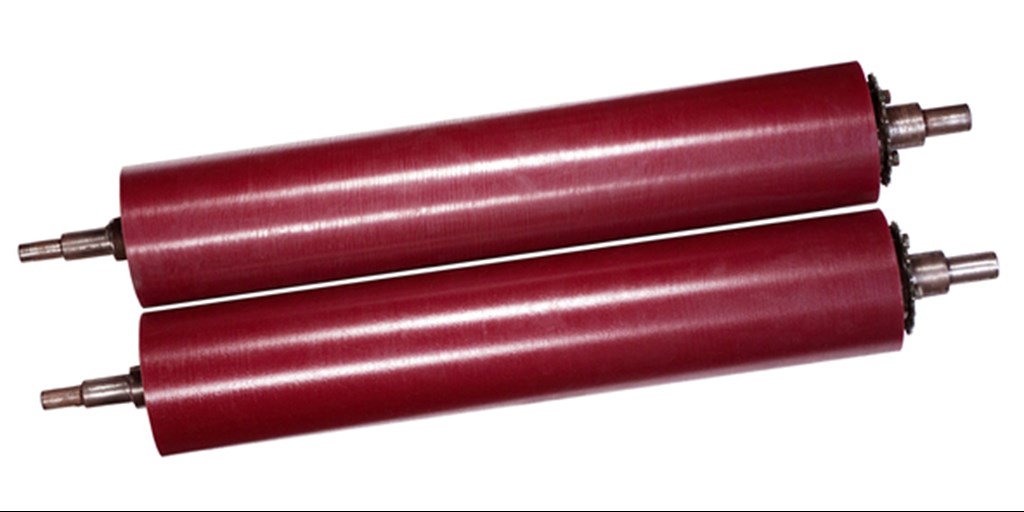Woven Nylon Tape is a Common Compaction Material, But…
A variety of industries — particularly those manufacturers working with rubber — use woven nylon tape to apply compaction during their vulcanization process. Also referred to as sail cloth or wrap tape, woven nylon tape is a consistent choice because it’s not a one-time-use product. It can be rewound after a curing cycle (provided that those cycles weren’t high-temperature), often allowing up to several uses before it must be discarded. While more costly than other solutions, this advantage has made it a go-to material for applying compaction.
However, as with many other industries, companies that produce woven nylon tape and cotton strapping are experiencing production delays due to material and labor shortages. For their clients that need compaction solutions to maintain their own productivity, this is a significant concern. Fortunately, other solutions are available beyond woven nylon tape that can be used for compaction and vulcanization needs — and provide additional value-added benefits.
Advantages of Hi-Shrink Tape vs. Woven Nylon Tape
Hi-Shrink Tape is a heat-shrinkable tape that applies compressive force to a layup. It is most often made of polyester, ETFE, and polyimide. Unlike woven nylon tape and other non-shrinking films like cellophane and polypropylene, Hi-Shrink Tape does not relax as curing temperatures rise. Instead, even greater compressive force is applied to the layup or product as the temperature rises, ensuring consistency and an overall more uniform output. Here are several key advantages of Hi-Shrink Tape over woven nylon tape.
1. Speed and Ease of Use
While both material types can be applied using machines, Hi-Shrink Tape is generally faster and easier to apply because it can be produced on different-size cores. This enables both hand taping as well as use of automation equipment like winders, making Hi-Shrink Tape a more viable solution for production facilities with high throughput. It’s even available on traverse-wound spools for processes that require continuous lengths of tape. Additionally, if heat and pressure are the only variables involved in an application, Hi-Shrink Tape and an oven are all that is needed — replacing the need for an autoclave.
2. Greater Compaction
When applied, woven nylon tape or cloth will only provide compaction according to the tension with which it is applied to the layup or product. Additional layers of the material are needed as well to provide more compression. As temperatures increase during the curing process, the nylon will begin to relax — right when the resin or rubber begins to drop in viscosity and flow. It’s at this moment that greater compressive force is needed, and that’s exactly what Hi-Shrink Tape provides. This alternative material applies greater force as curing temperatures increase, ensuring the result is properly laminated and free from voids, volatiles like gasses or vapor, and other foreign object debris. Additionally, Hi-Shrink Tape does not require the same wrapping tension that woven nylon does in order to achieve the same compaction — reducing unnecessary strain on equipment and workers.
3. Volume and Costs
Because multiple layers of woven nylon cloth are needed to apply compression, more of the material is needed upfront. Even though it’s often reusable, that reusability eventually ends and more material must be purchased. Hi-Shrink Tape is significantly thinner than nylon tape (available even down to 1 mil, or one-thousandth of an inch), you get more of the material on your cores, allowing you to maintain your productivity and increase product quality with less material overall. You also get the same level of compaction force with less tape as well. While Hi-Shrink Tape is not reusable, this benefit of having more tape upfront that applies more force ensures you’re ready for any project.
4. Customization
With woven nylon tape, what you see is essentially what you get. While there may be some customization between suppliers and applications, it simply doesn’t compare to Hi-Shrink Tape, which offers significantly more flexibility. A variety of thicknesses are available ranging from 1 mil to 5 mils, generally increasing in shrink force with thicker variations (around 5–20% with additional customization available). Options are available as well that apply more force with higher temperatures all the way up to 752ºF (400ºC). And, Hi-Shrink Tape is available in both release-coated and non-release-coated options. Release coating allows the tape to be more easily removed from the layup after curing. Some tapes are available with perforations as well, allowing layups to expel gasses and vapors as the tape shrinks.
Get the Right Material for Your Application at the Right Time
Dunstone has been manufacturing Hi-Shrink Tape for multiple industries nationwide for decades. If you’ve traditionally been using woven nylon tape for your compaction needs and are experiencing supply difficulties, our Hi-Shrink Tape offers the compaction, usability, and customization you need to make your application a success. With rolls up to 20” wide and overall lengths upward of 1,200 yards available, we’ll tailor a compressive tape solution specific to your application and continue to deliver the materials you need to provide high-performing, reliable products for your customers.
Get in touch with us today to learn more about our Hi-Shrink Tape and its capabilities. Free samples are always available to help you confirm its performance in your production environment. Simply let us know what you’ve been using, and we’ll recommend a solution.
